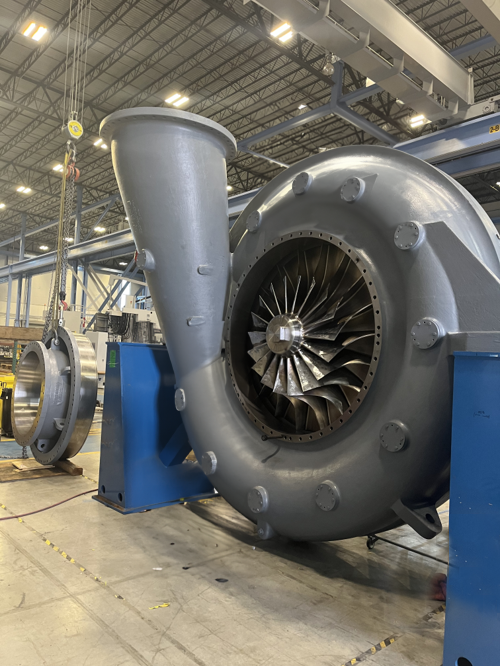Seamless Integration of Rotating Equipment Replacements
The seamless integration of rotating equipment replacements is a critical undertaking in the engineering field. A recent project centered on the drop-in replacement of the AC Compressor D54 Centrifugal Compressor has not only pushed the boundaries of engineering but also set a new standard for efficiency. This ambitious endeavor involved the collaboration of RMS’s engineering and metrology teams to ensure a flawless transition and improved customer outcomes.
Project Scope and Challenges
The project aimed to facilitate a drop-in replacement for the AC D54 Centrifugal Compressor, presenting numerous challenges and opportunities for innovation. The journey began with real-time scanning of the existing blower while in operation, an innovative approach that allowed engineers to capture critical geometries such as suction and discharge nozzles and baseplate feet without disrupting the customer’s production schedule. The precise measurement of these elements formed the foundation for subsequent project steps.
High-Accuracy Scanning and Virtual Assembly
A pivotal aspect of the project involved scanning the drop-in replacement blower at RMS’s Pearland shop. This high-accuracy scan was crucial in ensuring the replacement blower would seamlessly integrate with the existing system at the customer’s site. The precision of the scan set the stage for the virtual assembly process in the Prevu3D platform.
The virtual overlay of the replacement blower onto the scan data of the existing machine allowed RMS to prepare for the drop-in replacement process. By identifying differences between the two blowers in this virtual space, RMS engineers could proactively address potential challenges. These differences can be seen in the above video. The red imagery represents the new blower overlaid on to the existing unit. This step provided a thorough understanding of how the replacement blower would fit within the existing system, minimizing surprises during actual installation.
Machining and Metrology Excellence
During the virtual overlay process, engineers discovered the need for machining the baseplate to fit the new blower seamlessly. Collaborating with a field machining company, engineers optimized the baseplate geometry to ensure smooth installation with optimal shaft end alignment. This proactive approach was instrumental in avoiding delays and complications during the physical replacement.
The comparison between the existing and replacement blowers revealed differences in discharge nozzle heights between the existing machine and the replacement at RMS’s Pearland Works facility. Leveraging metrology data, engineers swiftly fabricated a transition spool to address this variation. This agile response showcased the project team’s commitment to efficiency and highlighted the power of data-driven decision-making.
Collaboration and Communication
The success of this project hinged on effective collaboration, both internally and externally. Close collaboration with the site team was crucial to ensure the project aligned with site requirements and expectations. Ongoing communication and feedback loops played a pivotal role in adapting to unexpected challenges and ensuring a successful outcome.
Setting New Standards for Efficiency and Precision
The drop-in replacement of the AC D54 blower stands as a testament to the ingenuity and adaptability of RMS’s engineering practices. By seamlessly integrating cutting-edge technologies, real-time scanning, and virtual assembly, this project has redefined equipment replacement processes, setting a new standard for efficiency and precision. As industries evolve, endeavors like these pave the way for a future where equipment replacements are executed with unparalleled accuracy, minimizing downtime and maximizing operational effectiveness.

